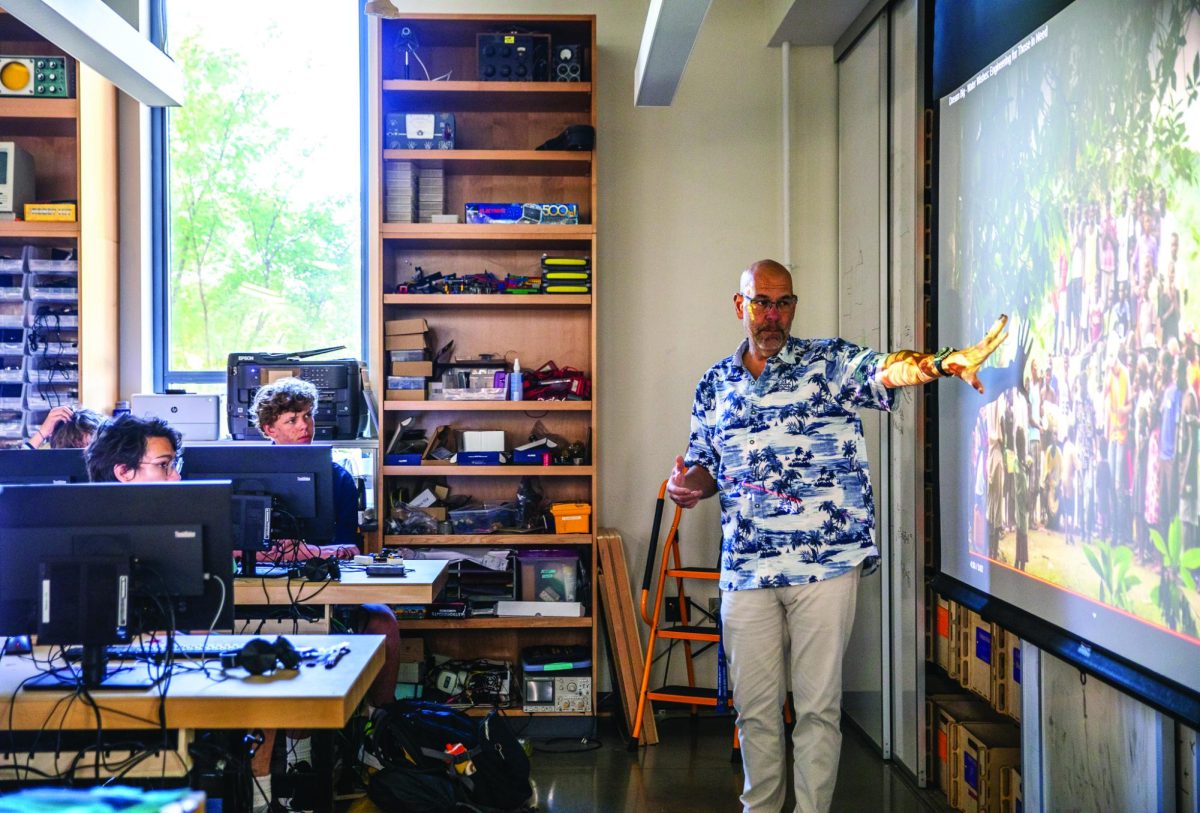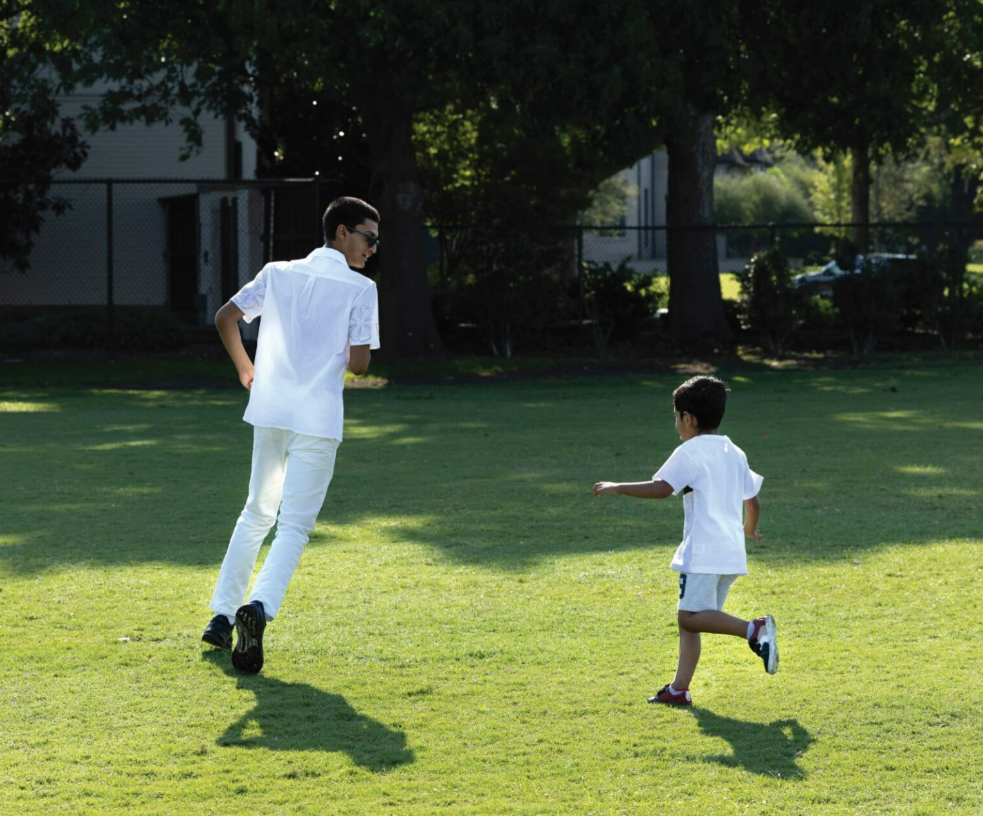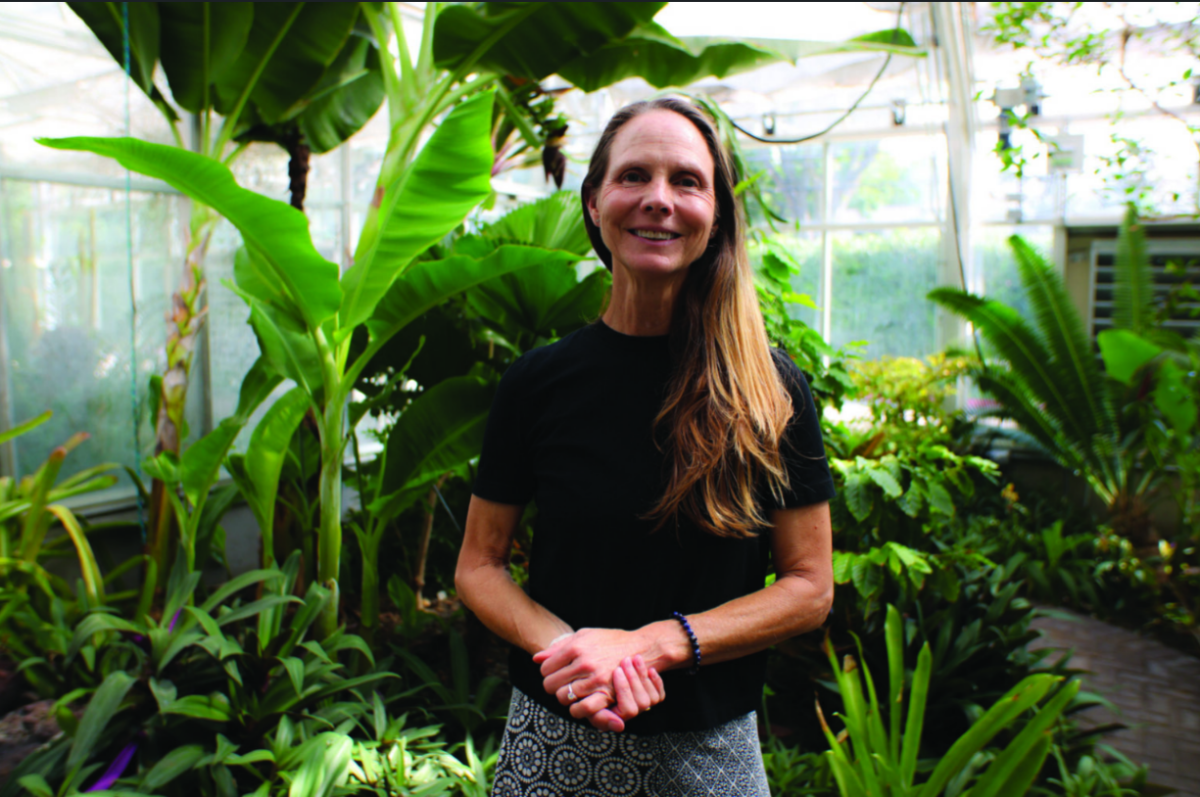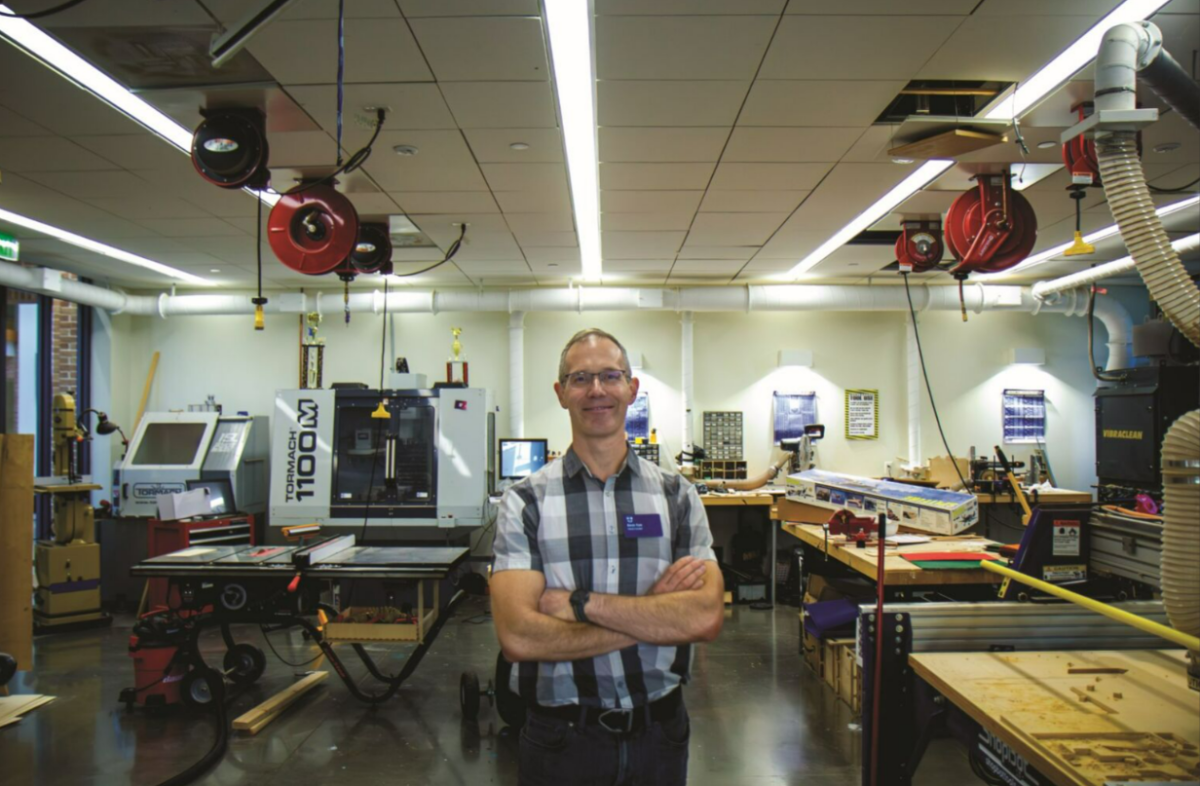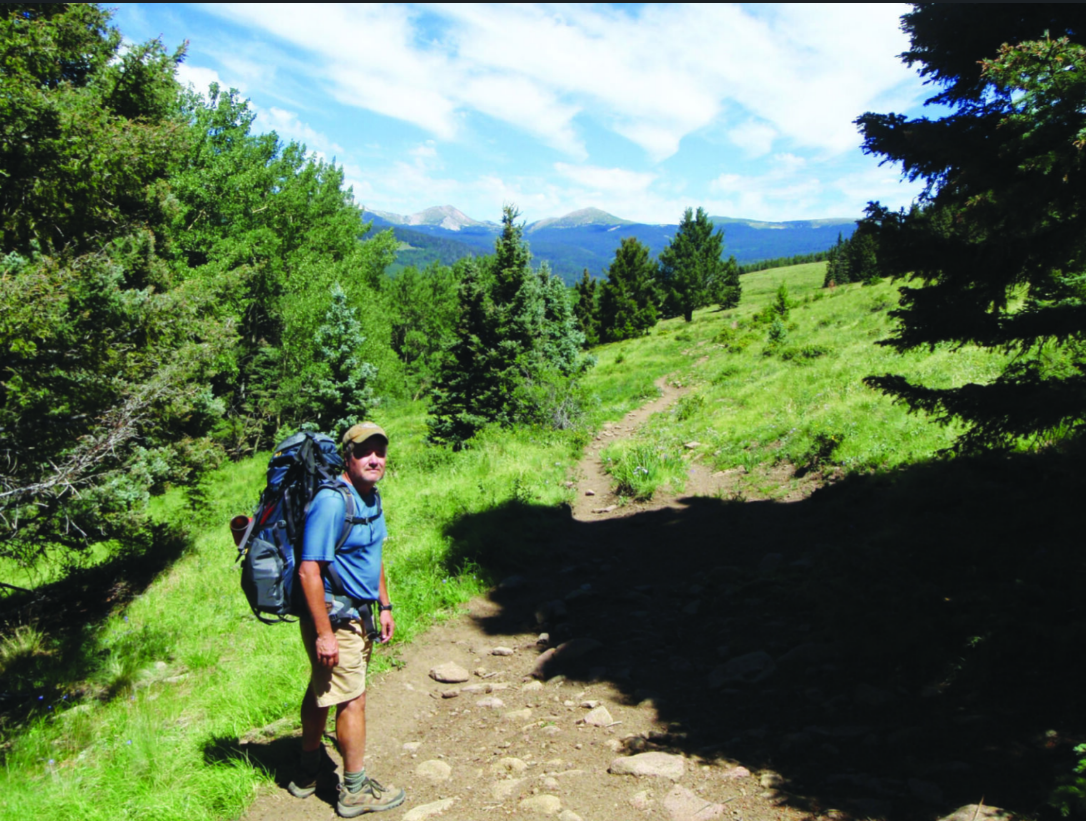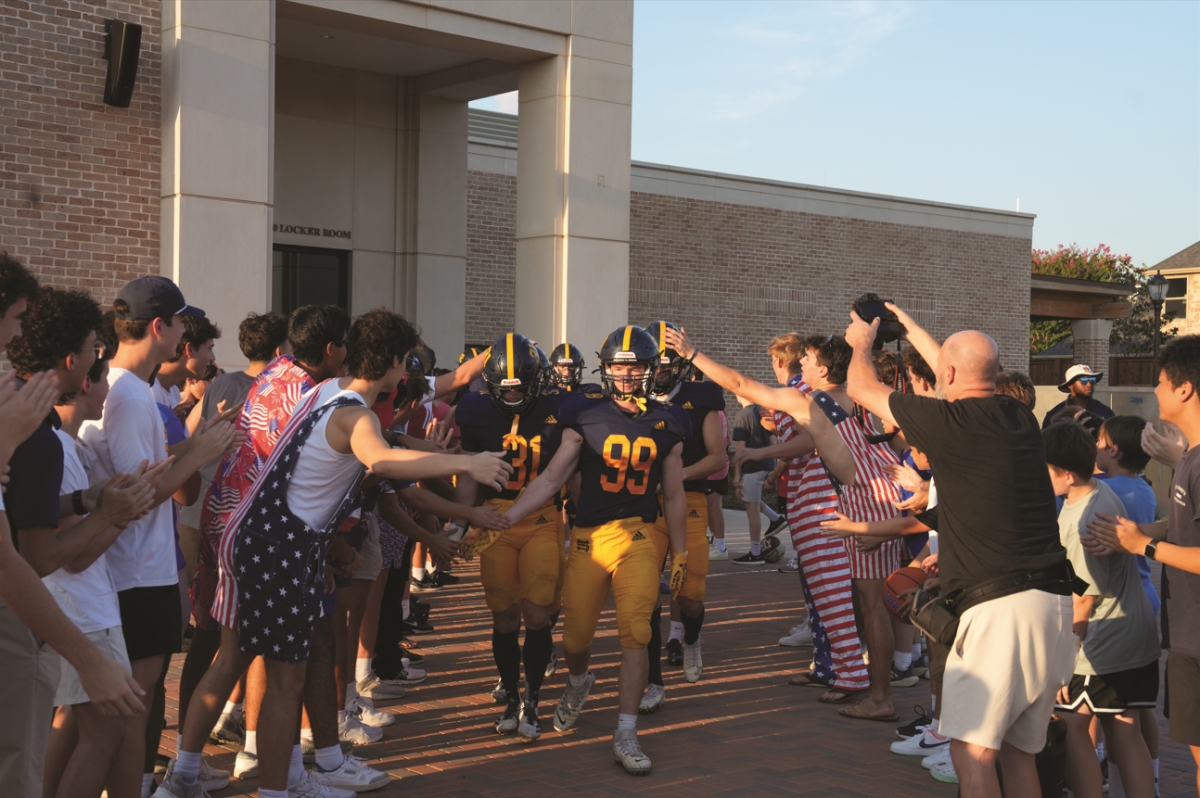His vision faded.
The silty and murky Curaçao harbor water blocked his view.
The ominous prowling of those endlessly spinning cruise ship propellers and whirring of nearby boats reminded John Milam of his peril.
Years of training as a scuba diver lended him the courage and experience to continue swimming towards the ship’s rotor. His best friend had messed up.
One of the docking lines was cut in half by the blades, and Milam needed to investigate the damage.
If the line was tangled, the ship could not depart.
He dove.
As he got closer and closer to the propeller, he couldn’t see any rope. An onset of relief came over him as he began to resurface through the silty, disgusting water, swimming through the tingling bubbles of his breath.
Science and engineering teacher John Milam’s childhood was unlike most kids. His father’s career path forced his family to move to a new city almost every two years, leaving behind the life he had previously known.
His father was mainly stationed in San Diego, where Milam was born, at the Miramar Marine Corps base, so he and his family would return to the coastal city every few years.
But he didn’t meet his father until he was six months old when he had returned from a stint in the Vietnam War. His father, a fighter pilot in the Navy, was called away to Brunswick Ga., serving as a flight instructor. Milam and his family were forced to move away from their home for the first time.
Then just a few years later, Milam and his family returned to San Diego before moving back across the country to Newport, RI. Again, duty called Milam’s father to leave everything behind for Monterey, Calif. then San Diego and later North Carolina around the time of Milam’s 18th birthday.
Moving from place to place had a large impact on Milam. His connection with his family grew stronger each time it happened: his sisters became his best friends, always having each other’s back.
But even though the thrill and adventure of travel appealed to Milam, later playing an important role in his adult life, he reflects about what he missed out on: a home he could cherish, a neighborhood filled with friends and good memories, and seeing those same friends each time he might’ve returned from a break at college.
When he was entering his adult life, Milam was still unsure about what he wanted to do. Even with the constant travel and his seemingly nomadic lifestyle, at least one thing remained constant. He loved the water, from the cold, deep oceans in Rhode Island to the crystal coasts of San Diego, spending much of his time sailing, surfing and swimming.
At around 22-years old, he decided to pursue his passion for scuba diving. Milam describes it as like getting a master’s degree, taking lots of dives and spending countless hours training. He spent a couple of years rising through the ranks before finally achieving Diving Instructor rating.
The diving school progression has a dozen stages from Open Water Diver to Instructor. Each certification has its own minimum requirements to pass through, testing an escalating demand of skill. For example, during his training for the Rescue Diver certification, Milam had to navigate through total darkness, rescue others and operate CPR while having a piece of duct tape over his goggles.
The final stage before earning the Diving Instructor certification entails two weeks of training in Florida for 15 hours a day under close inspection, and his final test showed his talents.
He was in about 40 feet of water, examining four students’ skills when a school of jellyfish swarmed the divers, stinging them like a hot wire searing the skin. Knowing the risks of pressure change, Milam desperately held on to their fins, forcing his students to endure the pain but saving their lungs.
“It seemed like a complete disaster, and I thought I wasn’t going to be able to be an instructor, but they said ‘you did fantastic because you saved them from hurting themselves,’” Milam said.
After a few years as a scuba diving instructor, Milam decided he wanted to go to college at the University of North Carolina at Wilmington with a focus on marine biology. He chose this field because it made sense given his love and experience with the ocean.
“I had this fantasy that I’d live in the Caribbean to research sharks and dive and do all this incredible research,” Milam said. “(I thought) that this is exactly what I want to do.
Because he did not meet all the school’s course requirements, Milam had to take on another class. And in this class, he unexpectedly found a new calling.
“(I was told to) go take an education course (because they thought that I would) enjoy the course,” Milam said. “Part of the course was I had to go observe classes out in the public schools, and I was sitting there watching a middle school class, and I thought the teaching was horrible. There’s no way that any of these students were going to go into science as a result of the teaching that I saw.”
Milam subsequently redeclared his major to education, and he is often reminded why he began teaching through the work of his students.
“I was teaching an eighth grade science class down in Houston,” Milam said. “I was really pushing genetic engineering hard in this eighth grade science class. Fast forward about ten years later, I’m working at a university (in Cleveland), and I get this email that says, ’I just wanted you to know that your teaching in eighth grade about genetics had such an impact on me that tomorrow I’m graduating with my PhD in genetic engineering, and I owe it to you.’”
While studying for his masters degree in education at Texas A&M, one of Milam’s professors had a strong connection with the National Aeronautics and Space Administration (NASA). Milam was given the opportunity to work with NASA in which he would be partnered up with another scientist or engineer. Over six to eight weeks studying closely with the scientists, Milam would then use the information he obtained from their procedure to write science and engineering curricula for Texas public high schools and middle schools in a program called the Middle School Aerospace Scholars.
“(We would) bring teachers in over the summer and introduce them to astronauts and show them all the cool stuff at NASA, push the curriculum and how to use it in the classroom,” Milam said.”
Hundreds of teachers would attend the summer program and bring this new knowledge back to their classrooms. The program also had an online presence where teachers could learn the curriculum remotely.
Milam designed the curriculum to reflect the authentic, real-world science done at NASA. For example, his students have mimicked specific Mars rover missions.
“(Students would) design tires that would go through various surfaces and see how this particular tire design works in sand versus over rocks,” Milam said. “We would again use Lego robotics, but then we would modify the tires. However, the student designed the tire to be and then we would test it and collect data and evidence on different surfaces.”
Milam chose to express authentic science because he felt students were often misled to believe that science always has a correct answer similar to a subject like history. He wanted to give kids a chance to experience a more realistic look at how science is done at the highest level like NASA.
“We have this classroom science, which is very ’cookbooky,’ where you do a lab and you just follow the rules,” Milam said. “If you do it right, you get close to the answer, and we already know what the answer is (for that lab), but that’s not really authentic science.”
Milam emphasizes the unknown element in science: how there is no single correct answer to a problem but instead a better solution.
After his work with NASA, Milam went on to teach at various universities and schools around the country from Minnesota to Houston. Notably while teaching at a school in St. Paul, Minn., a group of his students, who saw him as a close mentor, approached Milam, seeking his assistance to start a robotics program. Milam’s attention to systemic issues has helped promote innovation in the next generation of scientists.
“At the time, I was not technically a science or an engineering teacher,” Milam said. “I was a STEM teacher, so robotics became part of what I would do with that. (It was) more of Lego robotics at the middle school level, and those students wanted to go on and continue to get better and go to the higher levels of robotics.”
Just last year after his wife got the job as Head of School at the Winston School, Milam also looked for a position in the Dallas area. He met the Makerspace Director Stuart Mayer and instantly became close friends with him. Milam was ecstatic when he received the news of his hiring.
“I’ve been all over the place and have never seen such a special place as St. Mark’s. Not only are the facilities amazing, which in itself would be a reason to move here, but the truth is that the people are phenomenal. The people here are the best at what they do. So in the 27 years that I’ve been teaching, I’ve never had as good of a start to a school year as I have at St. Mark’s.”
After a long few decades of teaching across the country, Milam has decided to settle down in Dallas.
“My father was in the Navy when I was growing up, so we moved about every 18 months to two years, and that just led into my adult life,” Milam said. “It’s nothing to pick up and move to someplace else; I enjoy the adventure of that; I’m not intimidated by that. But I can say that now I’ve gotten to the point in my life where I’m ready to put down some roots and settle, and I think Dallas and St. Mark’s is the place to be.”


